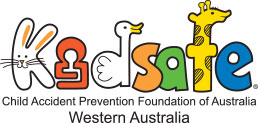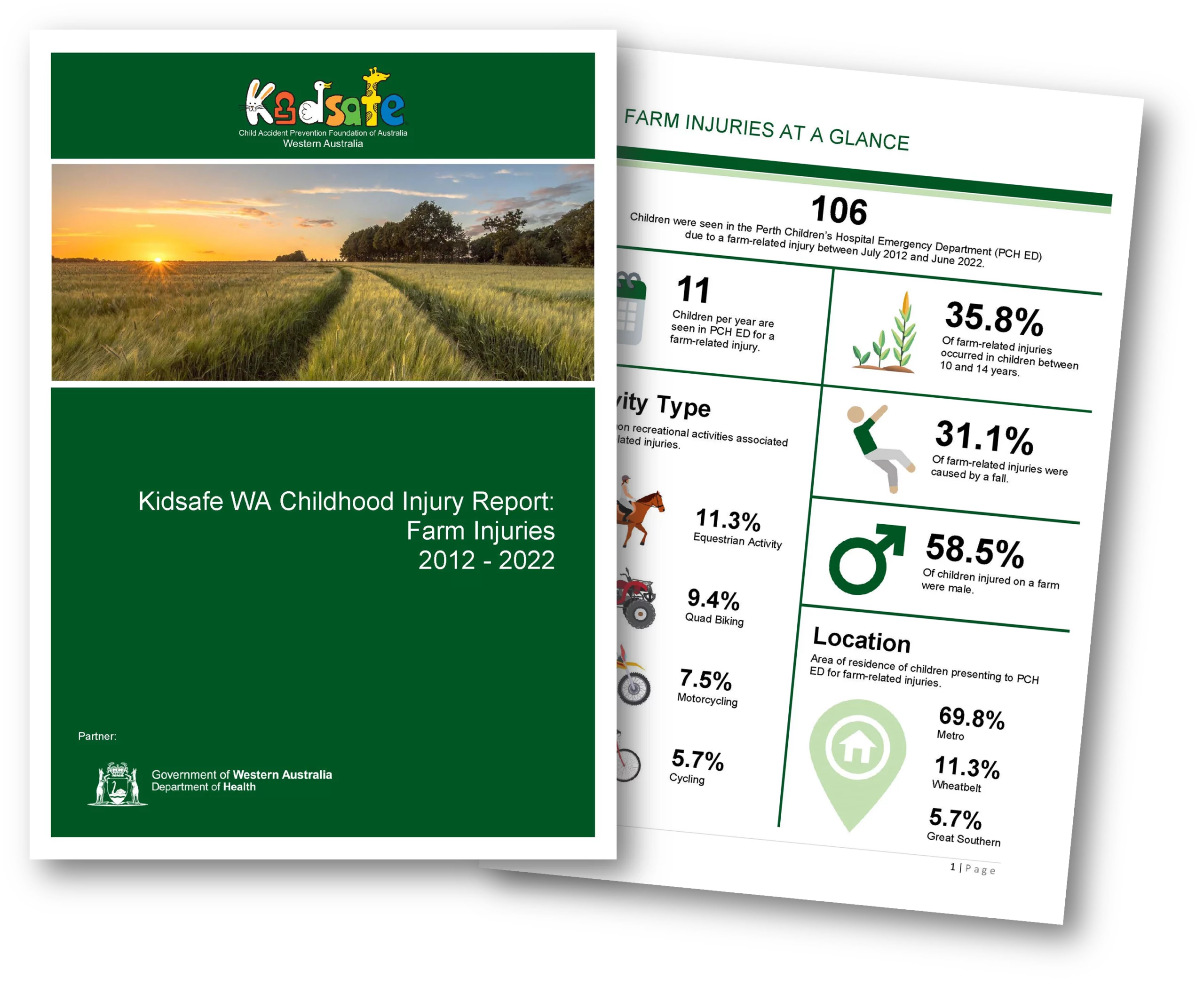Growing up in a farming environment can provide a unique and rewarding upbringing for Australian children. While there are many benefits to this lifestyle, children are inevitably exposed to an increased number of hazards that can put them at risk of serious injury or death. With many Australian farms being family-owned and operated, the home environment often overlaps with an agricultural workplace, creating numerous challenges when it comes to reducing typical child injury risks.
Kidsafe WA has recently released the Childhood Injury Report: Farm Injuries. Between July 2012 and June 2022, there were 106 farm-related injury presentations to the Perth Children’s Hospital Emergency Department (PC ED). While this accounts for a small percentage of total injury presentations to PCH ED, farm-related injuries tend to be more serious in nature and have a higher rate of hospital admissions for further treatment.
Children aged between 10 and 14 years are at greatest risk of sustaining an injury on a farm, accounting for 35.8 per cent of all farm-related injuries to PCH ED. The most common causes of farm-related injury were falls (31.%, n=33) and transport accidents (30.2%, n=32). Over one-third (36.7%, n=39) of farm-related injuries seen at PCH ED occurred while a child was participating in a recreational activity, with the highest number of injuries associated with equestrian activity (11.3%, n=12) and quad biking (9.4%, n=10).
To minimise the risk and severity of injury to children on farms, the following preventative measures can be followed:
- Provide a secure safe play area around the home to restrict young children’s access to water sources and other hazards.
- Do not allow children under 16 years of age to ride or be a passenger on a quad bike.
- Always ensure children are restrained in vehicles with seatbelts or the appropriate child car restraint.
- Do not allow children to ride as passengers on large farm machinery, including tractors.
- Teach children how to safely interact with farm animals.
- Ensure children wear safety equipment when horse riding, including a helmet that meets Australian Standards.
- Ensure older children are given tasks and responsibilities that are suitable for their age and stage of development.
- Ensure all visitors are aware of hazards and familiar with safety rules in place for children and supervising adults.
Read the full report here or find it with our other Childhood Injury Bulletins and Reports.




